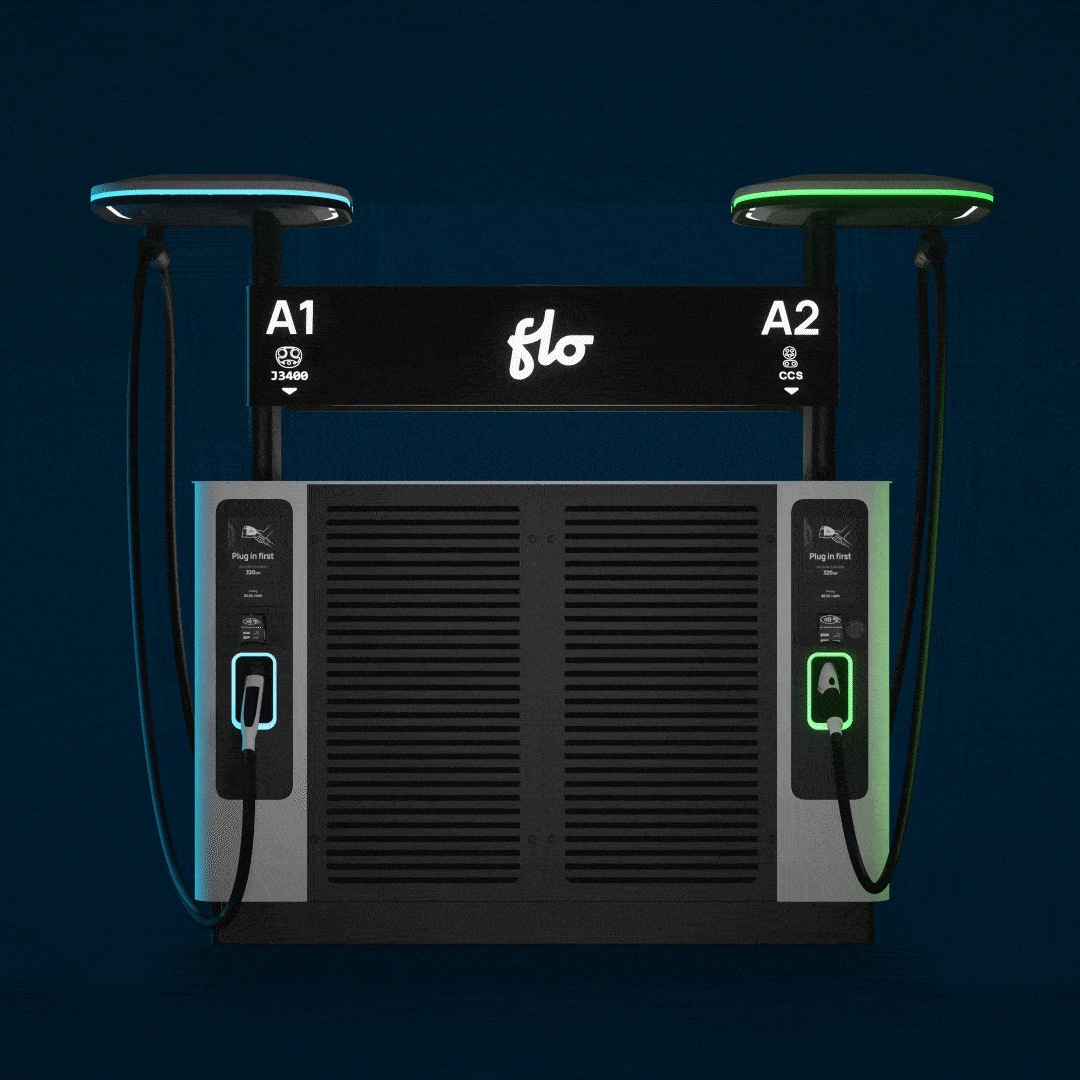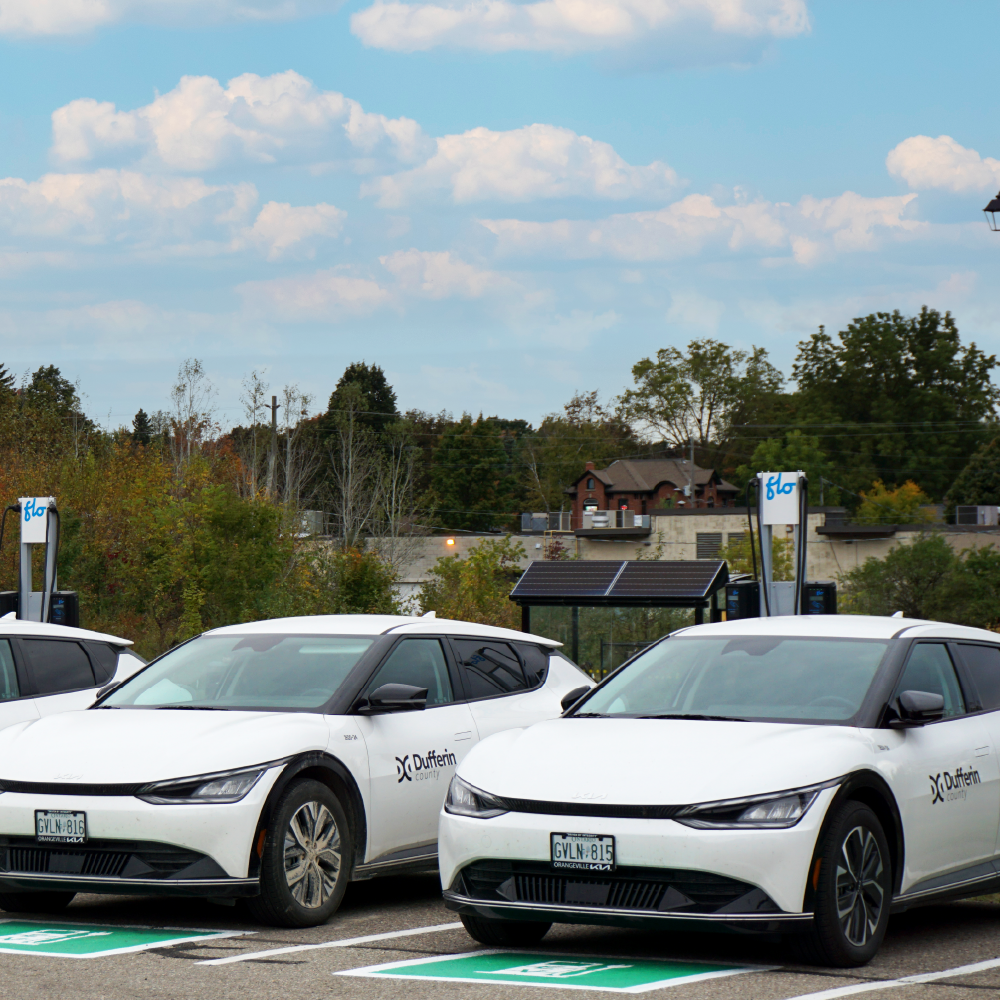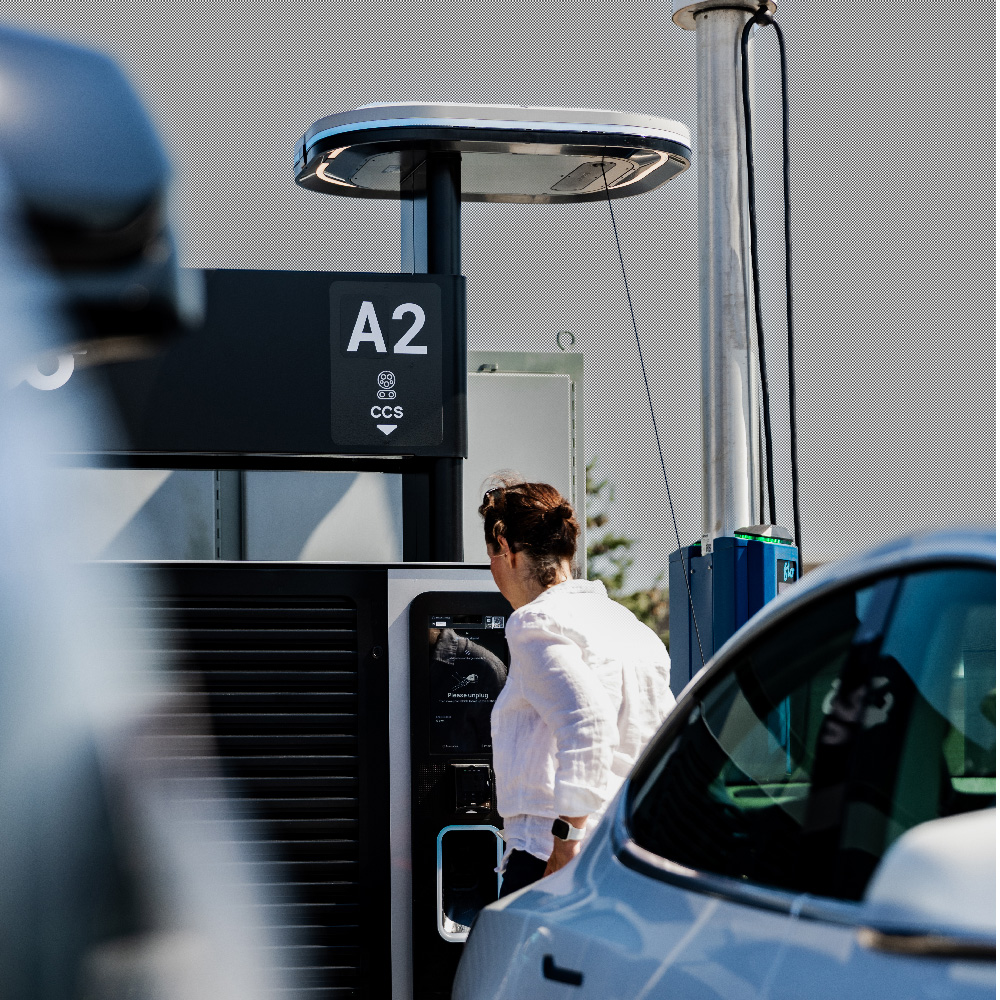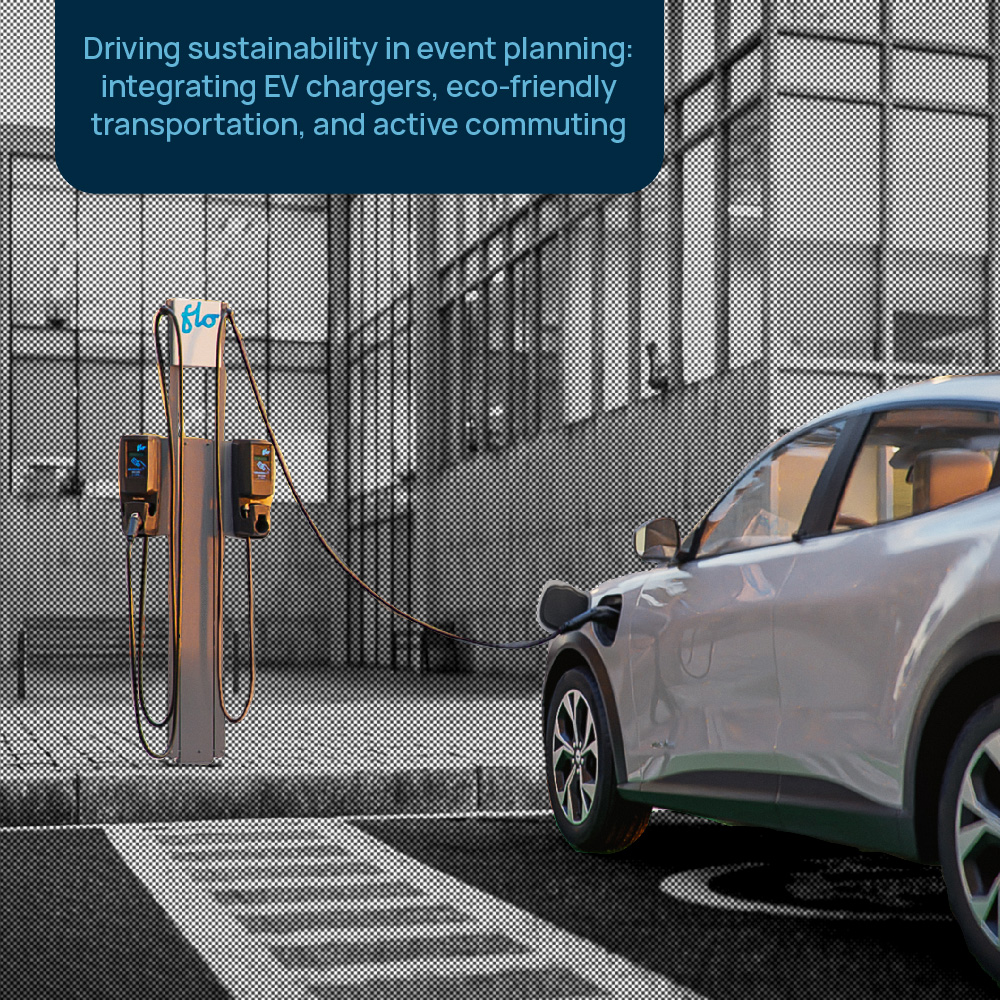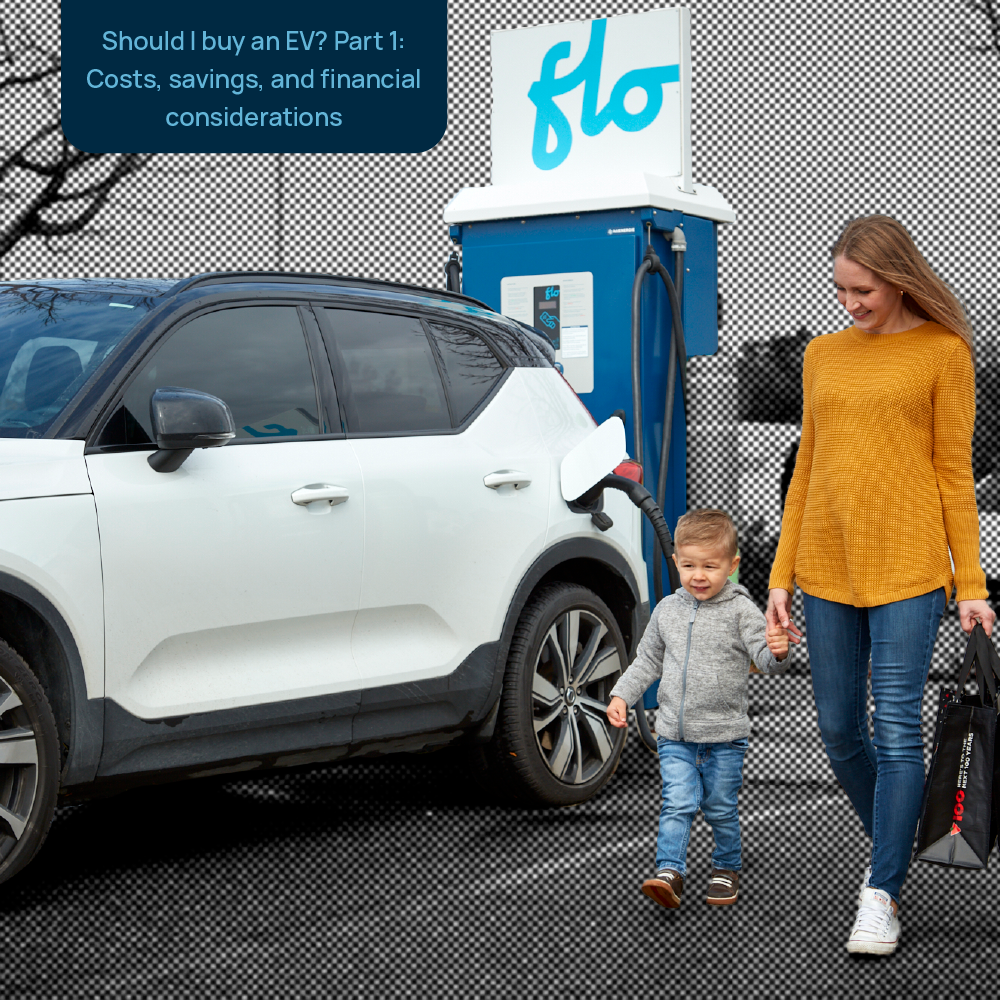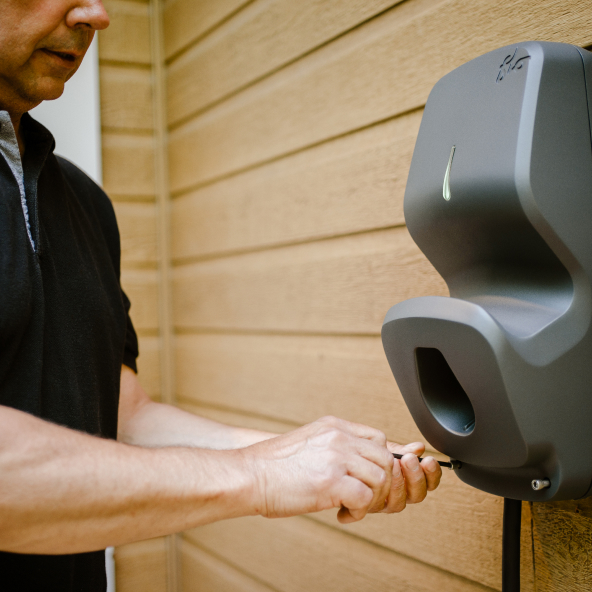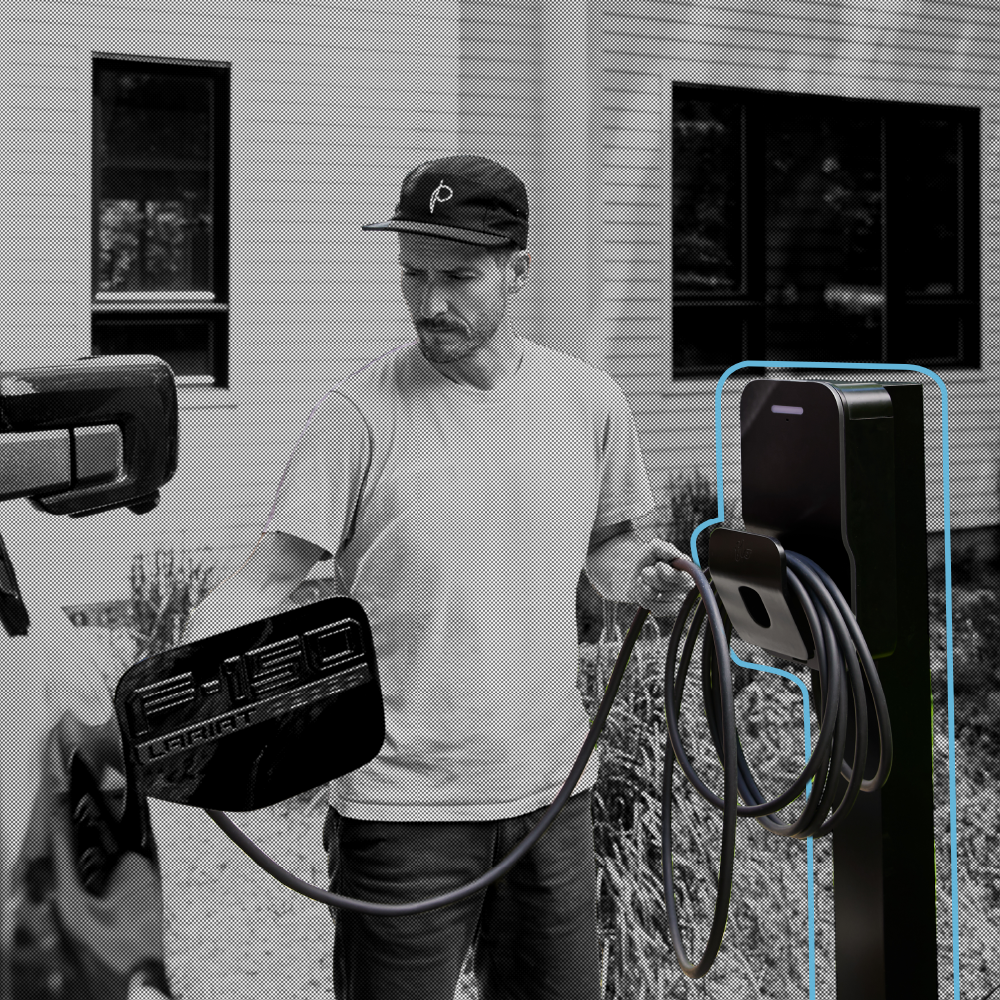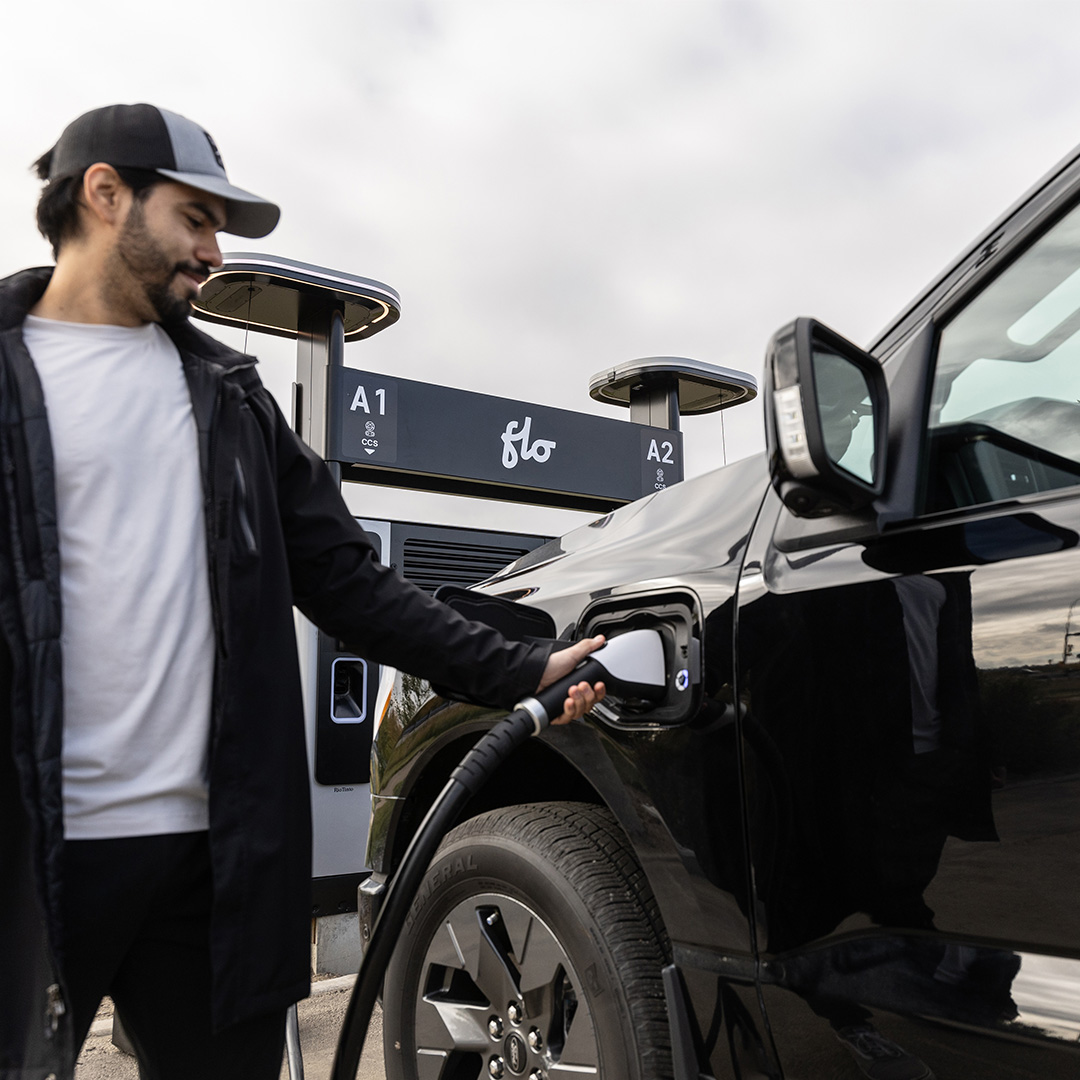- For EV Drivers
- For Business
- Incentives
- Alberta incentives
- British Columbia incentives
- Manitoba incentives
- New Brunswick incentives
- Newfoundland and Labrador incentives
- Northwest Territories incentives
- Nova Scotia incentives
- Nunavut incentives
- Ontario incentives
- Prince Edward Island incentives
- Quebec incentives
- Saskatchewan incentives
- Yukon incentives
- Products
- Insights
- Company
- Shop now
By Cory Bullis, Public Affairs Director, FLO
In a recent article, I discussed why curbside charging is so important to equitable EV adoption. And while curbside EV chargers are critical to increasing equitable access to what we call “home-adjacent” charging for those who can’t have a charging station at home, they can also serve as a reliable public charging option near parks, shopping centers, workplaces, and anywhere people go. They can often benefit local businesses by bringing in a stream of potential customers. It’s a win-win-win situation, so the only thing left is to figure out where to start.
Curbside chargers come in all shapes and sizes
Curbside chargers can be generally categorized as either attached to existing infrastructure or installed on entirely new infrastructure at the curb.
Adding EV chargers to existing Infrastructure
Installing curbside chargers on existing infrastructure can reduce costs because civil engineering work (e.g. trenching and wiring), typically the costliest part of the installation, can often be avoided entirely or is lower than a new build. Other benefits are quicker deployment and saving precious space on the curb. However, existing infrastructure may not be available or suitable everywhere a charger is needed.
Existing infrastructure configurations include:
- Level 2 pole-mounted: stations are mounted on an existing utility pole, using a mounting bracket. Pole-mounted chargers can save up to 55% or even 70% of installation costs, depending on the site1.
- Level 2 streetlight-mounted: stations are mounted on an existing streetlight using a mounting bracket. Streetlights converted to LED lighting are often good candidates because they may have excess electrical capacity to power stations. Mounting chargers on streetlights has the potential to save approximately the same amount on installation costs as pole-mounted chargers, but this is dependent on whether the streetlight needs upgrades or not.
Building new infrastructure for EV chargers
Other cities choose to deploy curbside charging infrastructure on dedicated infrastructure.
- Level 2 Pedestal-mounted: stations are mounted on a newly constructed pole (also referred to as a “pedestal”) – just like the PlugNYC network. A primary benefit of this kind of deployment is flexibility: we can install chargers where they are most needed and are not limited to the suitability of existing infrastructure.
How ownership of charging stations impacts deployment
Choosing the right curbside charging application is a key consideration. Another is deciding who owns the charger and is responsible for its upkeep. Cities are experimenting with different options across North America. Some of the most common options are:
- City-owned: the city owns the charger, leveraging maintenance and operations work provided by the charging network. This model works well when a city has the resources, expertise, and staffing to own infrastructure and is hoping to deploy at scale.
- Utility-owned: the utility owns the charger, with maintenance and operations typically divided between the utility and the charging network. In some areas, utilities are well positioned to own chargers. They have the technical expertise and maintenance teams to service electrical infrastructure like charging stations. For utilities that can ratebase curbside infrastructure, there may also be opportunities to recoup costs over much longer time horizons.
- Hybrid ownership: Some combination of the charging company, utility, telecommunications company or city owns parts of the charger and its make-ready infrastructure and carries out support and maintenance. This can help spread costs across multiple parties should available funding be limited.
Discover how others did it: 3 partners join forces to power EVs in New York City
How to deploy public curbside charging stations
No matter the curbside application, there are universal best practices for deployment. Here is a sample that apply in most cases, based on FLO’s experience working with leading municipalities and utilities across North America.
Site selection
- Clearly define your goal(s) first, as they will guide the types of chargers deployed and the ownership models, which in turn shape the sites you select. Is this about getting as many stations as possible for a fixed budget, or are there equity factors to consider? Is the intent to serve residents in multi-family housing or categories of drivers like ridesharing drivers or tourists?
- To the extent feasible, deploy chargers near businesses, workplaces, and residential or recreational areas. Amenities, convenient pedestrian walkability, and the ability to park for longer periods (2 hours minimum) also increase the use of stations.
- Involve everyone that uses the curb from day one in planning and give them an opportunity to share their perspective. Engaging the community early and often about site locations can minimize local concerns.
Installation, operations and maintenance
- Use chargers that are truly compatible with parallel parking at the curb. Most chargers were not designed to be installed at the curb and used by parallel parked cars. Therefore, they fail to account for the myriad of vehicles and their parking scenarios, leading to cables that are too short to reach the charging inlet or awkwardly lay across the vehicle, risking damage. A charger that is “fit for purpose” for the curb takes into consideration proper height and cable length, unique ADA specifications, proper setback to avoid damage from snowplows and trash trucks (if applicable), and unit display angles and specifications to make it user-friendly.
- Use rugged hardware to help the station stand up to the elements, abuse, and vandalism. Aluminum enclosures are resistant to weather and vandalism; locking the charging connector avoids unwanted use and tampering, and powder coating the enclosure makes it resistant to graffiti.
- Proactively monitor the network to ensure operability and support the chargers with a dedicated maintenance and operations plan. These approaches help identify broken chargers quickly and enable a rapid response to fix them as soon as possible, reducing driver inconvenience.
- Use a retractable cable management system to avoid cables being left on the ground, where they can act as a tripping hazard.
Community education and outreach
- Notify the public and hold community meetings. Frequent, clear communication is vital because many people are interested in the right of way. This gives businesses, community centers, residents, various city departments (i.e. parking, permitting, and street sweeping), and other members of the public ample opportunity to learn about the project, ask questions, and have any potential concerns addressed. The public wants to be included in this process rather than consulted after the fact.
- Work with and support community-based organizations for outreach. They often have strong local ties to residents and are a trusted voice for helping with education and awareness and collecting critical information that can help the project succeed. They are often better positioned to address any concerns that arise from the community and educate them on the benefits of EVs. Just make sure they get support for their valuable time and relationships.
- Measure benefits and outcomes of the project and outreach overall. There is no “one size fits all” approach to including the community in the curbside deployment process. Tracking metrics for involving the community is critical to assessing how to improve processes for future deployments. Some metrics to consider include number of community meetings held, number of public comments and questions received, demographic information of groups providing input, number of businesses met with to discuss the project and more.
Curbside chargers offer so much potential to accelerate EV adoption in communities. This type of infrastructure is highly flexible and can be adapted to meet any city’s needs and goals. If you’d like to take a big step towards a greener (and more equitable) future, reach out to our team. Unlike Goldilocks, you won’t have to keep trying until you get it “just right” – FLO will guide you along the way.
Sources:
[1] Werthmann, E. & Kothari, V. Pole-mounted Electric Vehicle Charging: Preliminary Guidance for a Low-Cost and More Accessible Public Charging Solution for U.S. Cities. World Resources Institute. November 2021. Page 21. <Pole-Mounted Electric Vehicle Charging: Preliminary Guidance for a Low-Cost and More Accessible Public Charging Solution for U.S. Cities | World Resources Institute (wri.org)>

